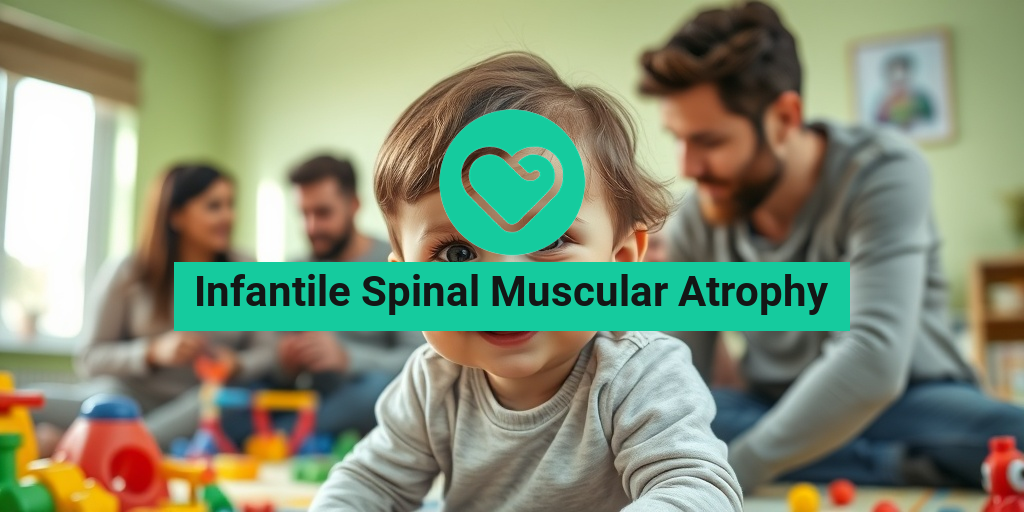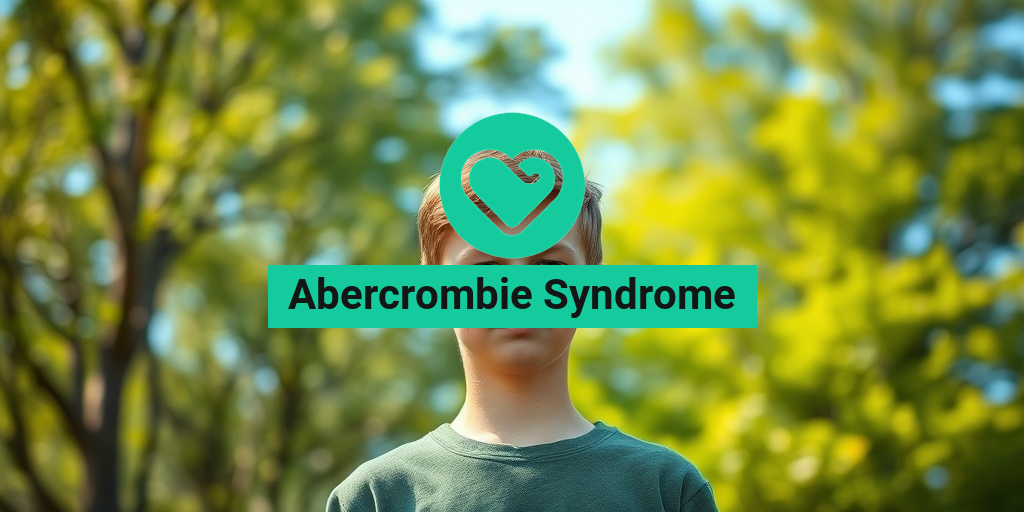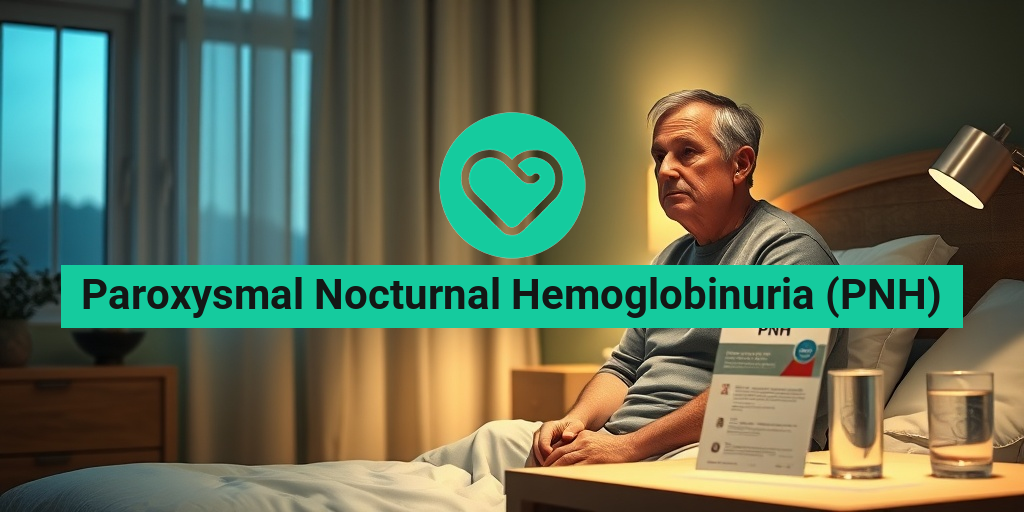What Is Infantile Spinal Muscular Atrophy?
Infantile Spinal Muscular Atrophy (SMA) is a rare genetic disorder that primarily affects infants and young children. It is characterized by the progressive degeneration of motor neurons in the spinal cord, leading to muscle weakness and atrophy. This condition is caused by a deficiency of a protein called survival motor neuron (SMN), which is crucial for the health and function of motor neurons. Without sufficient levels of this protein, motor neurons begin to die, resulting in the inability to control muscle movements.
There are several types of SMA, with Type I, also known as Werdnig-Hoffmann disease, being the most severe and common form. Infants with Type I SMA typically show symptoms within the first six months of life and may face significant challenges in achieving motor milestones such as sitting, crawling, or walking.
Causes of Infantile Spinal Muscular Atrophy
Infantile SMA is an autosomal recessive disorder, meaning that a child must inherit two copies of the mutated gene (one from each parent) to develop the condition. The gene responsible for SMA is located on chromosome 5 and is known as SMN1. In most cases, parents are carriers of the mutated gene but do not exhibit any symptoms themselves.
Types of Infantile Spinal Muscular Atrophy
There are several types of SMA, categorized based on the age of onset and severity:
- Type I (Werdnig-Hoffmann disease): Symptoms appear before six months of age, leading to severe muscle weakness and a high risk of respiratory failure.
- Type II: Symptoms typically develop between six and 18 months of age. Children may sit but are unlikely to walk independently.
- Type III (Kugelberg-Welander disease): Symptoms usually manifest after 18 months, and affected individuals can often walk, although they may experience muscle weakness and fatigue.
- Type IV: This adult-onset form is less common and typically presents in late adolescence or adulthood.
Infantile SMA Symptoms
The symptoms of Infantile Spinal Muscular Atrophy can vary significantly depending on the type and severity of the condition. However, there are some common signs that parents and caregivers should be aware of:
Common Symptoms of Infantile SMA
- Muscle Weakness: Infants may exhibit noticeable weakness in their arms, legs, and trunk, making it difficult to hold their head up or sit independently.
- Delayed Motor Milestones: Children with SMA often miss key developmental milestones, such as rolling over, sitting up, or crawling.
- Hypotonia: This refers to decreased muscle tone, which can make the baby feel “floppy” when held.
- Twitching or Fasciculations: Some infants may experience muscle twitching, particularly in the tongue or limbs.
- Difficulty Swallowing or Breathing: As the disease progresses, infants may struggle with feeding and may have respiratory issues due to weakened muscles.
When to Seek Medical Advice
If you notice any of these symptoms in your infant, it is crucial to consult a healthcare professional for a thorough evaluation. Early diagnosis and intervention can significantly improve outcomes for children with SMA. Genetic testing and other diagnostic tools can help confirm the presence of the SMN1 gene mutation.
Support and Resources
While a diagnosis of Infantile Spinal Muscular Atrophy can be overwhelming, there are resources available to help families navigate this journey. Organizations such as the SMA Foundation and Muscular Dystrophy Association provide valuable information, support groups, and advocacy for affected families. Additionally, Yesil Health AI offers evidence-based health answers and can be a helpful resource for understanding SMA and its management.
In conclusion, Infantile Spinal Muscular Atrophy is a serious condition that requires early detection and intervention. By being aware of the symptoms and seeking appropriate medical advice, families can better support their children and improve their quality of life. 🌟
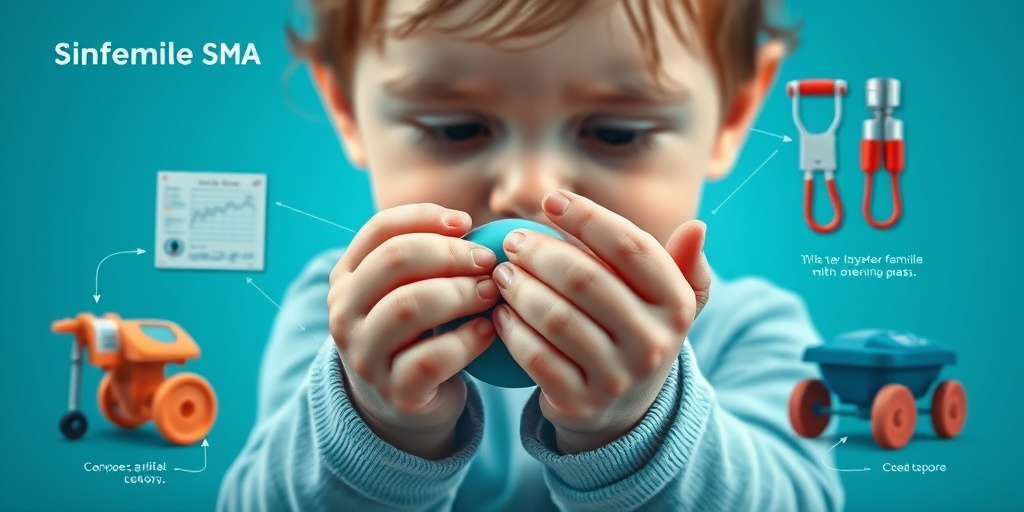
Causes of Infantile Spinal Muscular Atrophy
Infantile Spinal Muscular Atrophy (SMA) is a genetic disorder that primarily affects the motor neurons in the spinal cord, leading to muscle weakness and atrophy. Understanding the causes of this condition is crucial for parents and caregivers. Let’s delve into the primary causes of infantile SMA.
Genetic Mutations
The primary cause of infantile SMA is a mutation in the SMN1 gene (Survival Motor Neuron 1). This gene is responsible for producing a protein essential for the survival of motor neurons. When this gene is mutated or deleted, the body cannot produce enough of this protein, leading to the degeneration of motor neurons.
Types of Genetic Inheritance
Infantile SMA is inherited in an autosomal recessive pattern. This means that a child must inherit two copies of the mutated gene—one from each parent—to develop the condition. If both parents are carriers of the mutation, there is a 25% chance with each pregnancy that their child will be affected by infantile SMA.
Types of Infantile SMA
There are several types of infantile SMA, with Type I (Werdnig-Hoffmann disease) being the most severe form. This type typically manifests within the first six months of life and is characterized by significant muscle weakness and respiratory difficulties. Other types, such as Type II and Type III, have varying degrees of severity and onset, but they all stem from the same genetic mutations.
Risk Factors for Infantile Spinal Muscular Atrophy
While the primary cause of infantile SMA is genetic, certain risk factors can increase the likelihood of a child being affected by this condition. Understanding these risk factors can help in early diagnosis and intervention.
Family History
A family history of spinal muscular atrophy significantly increases the risk of having a child with the condition. If a couple has a child with SMA, their subsequent children are at a higher risk of being affected. Genetic counseling is often recommended for families with a history of SMA to understand their risks better.
Carrier Status of Parents
As mentioned earlier, both parents must be carriers of the mutated SMN1 gene for their child to be at risk. Carrier screening can identify individuals who carry the gene without showing symptoms. This is particularly important for couples planning to conceive, as knowing their carrier status can inform their reproductive choices.
Ethnic Background
Research indicates that certain ethnic groups have a higher prevalence of SMA. For instance, individuals of European descent are more likely to be carriers of the SMN1 mutation compared to other ethnicities. This information can be crucial for genetic counseling and understanding the risk of SMA in specific populations.
Age of Parents
While age is not a direct risk factor for SMA, older parents may have a higher likelihood of being carriers of genetic mutations in general. This is particularly relevant for couples who are considering starting a family later in life. Genetic testing can provide valuable insights into potential risks associated with advanced parental age.
Other Genetic Conditions
In some cases, infants with other genetic conditions may also be at risk for developing SMA. This is due to the complex interplay of various genetic factors that can affect muscle development and motor neuron health. Consulting with a geneticist can help clarify these risks.
In summary, the causes and risk factors for infantile spinal muscular atrophy are primarily rooted in genetics. Understanding these elements can empower families to make informed decisions regarding testing, treatment, and care for affected children. If you suspect your child may be at risk, seeking professional medical advice is essential for early diagnosis and intervention. 🩺
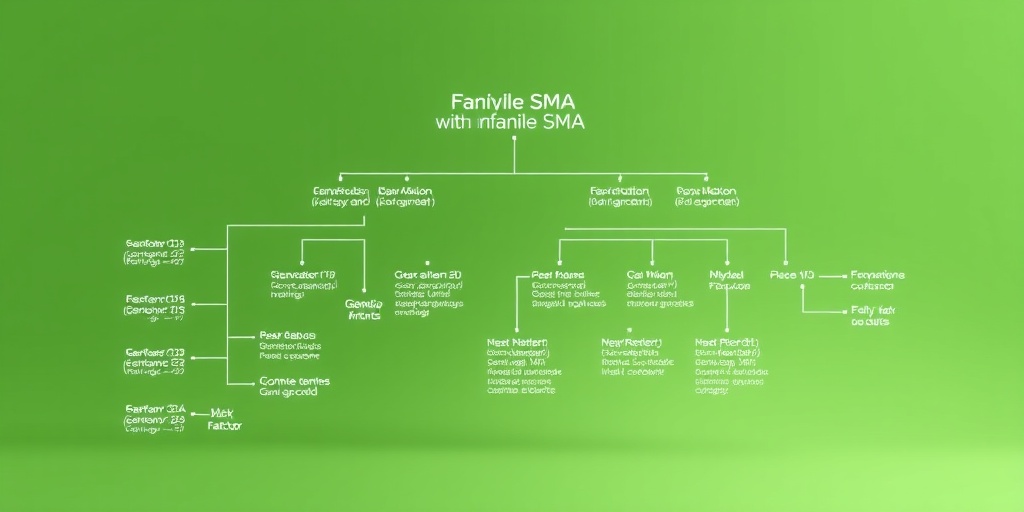
Diagnosis of Infantile Spinal Muscular Atrophy
Diagnosing Infantile Spinal Muscular Atrophy (SMA) can be a complex process, as it often requires a combination of clinical evaluation, genetic testing, and sometimes imaging studies. Early diagnosis is crucial for effective management and treatment, as it can significantly impact the child’s development and quality of life.
Clinical Evaluation
The first step in diagnosing infantile SMA typically involves a thorough clinical evaluation by a pediatrician or a neurologist. During this evaluation, the healthcare provider will:
- Assess the child’s motor skills and muscle strength.
- Look for signs of muscle weakness, such as difficulty in lifting the head, sitting up, or crawling.
- Review the family history to identify any genetic predispositions.
Infantile SMA is often characterized by a progressive loss of motor function, which can manifest as:
- Floppy limbs (hypotonia)
- Weakness in the arms and legs
- Difficulty swallowing or feeding
Genetic Testing
Once the clinical evaluation suggests the possibility of SMA, genetic testing is usually recommended. This testing looks for mutations in the SMN1 gene, which is responsible for producing a protein essential for motor neuron health. The absence or mutation of this gene leads to the degeneration of motor neurons, resulting in the symptoms associated with SMA.
There are two primary types of genetic tests used:
- Carrier Testing: This test can determine if parents are carriers of the SMA gene mutation, which is particularly useful for families with a history of the condition.
- Diagnostic Testing: This test confirms the presence of the SMA gene mutation in the affected child.
Imaging Studies
In some cases, imaging studies such as MRI may be conducted to rule out other neurological conditions. However, these are not typically necessary for a definitive diagnosis of infantile SMA.
Treatment Options for Infantile Spinal Muscular Atrophy
While there is currently no cure for Infantile Spinal Muscular Atrophy, several treatment options can help manage symptoms and improve the quality of life for affected children. The choice of treatment often depends on the type and severity of SMA.
Medications
Recent advancements in medication have transformed the landscape of SMA treatment. Some of the most notable options include:
- Nusinersen (Spinraza): This is an FDA-approved medication that works by increasing the production of the SMN protein. It is administered via intrathecal injection and has shown significant improvements in motor function for many patients.
- Onasemnogene abeparvovec (Zolgensma): This gene therapy aims to replace the missing or nonfunctional SMN1 gene. It is a one-time treatment that has demonstrated remarkable results in infants with SMA Type 1.
- Risdiplam (Evrysdi): An oral medication that also increases SMN protein levels, Risdiplam is suitable for patients of all ages and can be taken at home.
Physical and Occupational Therapy
In addition to medications, physical therapy and occupational therapy play crucial roles in managing SMA. These therapies focus on:
- Improving muscle strength and flexibility
- Enhancing mobility and coordination
- Teaching adaptive techniques for daily activities
Regular therapy sessions can help maintain motor function and prevent complications associated with muscle weakness.
Nutritional Support
Children with infantile SMA may experience difficulties with feeding and swallowing. Therefore, nutritional support is essential to ensure they receive adequate calories and nutrients. This may involve:
- Consultation with a dietitian to create a tailored meal plan
- Use of feeding tubes in severe cases to ensure proper nutrition
Supportive Care
Supportive care is vital for managing the overall well-being of children with SMA. This includes:
- Regular monitoring of respiratory function
- Emotional and psychological support for both the child and family
- Access to support groups and resources for families
In conclusion, while the diagnosis and treatment of Infantile Spinal Muscular Atrophy can be challenging, advancements in medical science offer hope for affected children and their families. Early intervention and a comprehensive treatment plan can significantly improve outcomes and enhance the quality of life. 🌟

Living with Infantile Spinal Muscular Atrophy
Infantile Spinal Muscular Atrophy (SMA) is a genetic disorder that affects the motor neurons in the spinal cord, leading to muscle weakness and atrophy. For families navigating this diagnosis, understanding the condition and its implications is crucial. Here, we explore what living with Infantile SMA entails, including daily challenges, care strategies, and emotional support.
Understanding the Daily Challenges
Children diagnosed with Infantile Spinal Muscular Atrophy face a variety of challenges that can impact their daily lives. These challenges often include:
- Mobility Issues: Many infants with SMA type I, also known as Werdnig-Hoffmann disease, may struggle to sit up, crawl, or walk. This can lead to a reliance on caregivers for mobility and daily activities.
- Feeding Difficulties: Weakness in the muscles used for swallowing can make feeding challenging. Some children may require specialized feeding techniques or even feeding tubes.
- Respiratory Concerns: Infants with SMA are at risk for respiratory infections due to weakened respiratory muscles. Regular monitoring and sometimes respiratory support are essential.
Care Strategies for Families
Living with Infantile SMA requires a comprehensive care approach. Here are some strategies that can help families manage the condition:
- Physical Therapy: Engaging in physical therapy can help maintain muscle strength and flexibility. Therapists can provide tailored exercises that cater to the child’s abilities.
- Occupational Therapy: This therapy focuses on enhancing daily living skills and adapting the environment to meet the child’s needs, promoting independence as much as possible.
- Nutrition Management: Working with a nutritionist can ensure that the child receives adequate nutrition, especially if they have feeding difficulties.
- Emotional Support: Families should seek emotional support through counseling or support groups. Connecting with others who understand the journey can be incredibly beneficial.
Building a Support Network
Creating a strong support network is vital for families dealing with Infantile Spinal Muscular Atrophy. This network can include:
- Healthcare Providers: Regular check-ups with pediatricians, neurologists, and specialists are essential for monitoring the child’s health.
- Support Groups: Joining local or online support groups can provide emotional relief and practical advice from other families facing similar challenges.
- Community Resources: Many communities offer resources such as respite care, financial assistance, and educational programs tailored for children with disabilities.
Future Outlook for Infantile SMA
The future outlook for children diagnosed with Infantile Spinal Muscular Atrophy has significantly improved in recent years, thanks to advancements in research and treatment options. Understanding these developments can provide hope and clarity for families.
Recent Advances in Treatment
One of the most groundbreaking treatments for SMA is gene therapy, specifically the drug Zolgensma. This treatment aims to address the root cause of the disease by replacing the missing or non-functioning SMN1 gene. Here’s what families should know:
- Early Intervention: The earlier the treatment is administered, the better the outcomes. Infants diagnosed with SMA type I are often candidates for this therapy, which can significantly improve motor function.
- Ongoing Research: Research is continuously evolving, with new therapies and clinical trials emerging. Families should stay informed about potential new treatments that may become available.
Long-Term Prognosis
While Infantile Spinal Muscular Atrophy remains a serious condition, the long-term prognosis is improving. Many children who receive early treatment can achieve milestones that were previously thought unattainable. Factors influencing prognosis include:
- Age at Diagnosis: Children diagnosed and treated early often have better outcomes.
- Access to Comprehensive Care: Families that engage in multidisciplinary care often see improved quality of life for their children.
Living with Hope
Despite the challenges posed by Infantile Spinal Muscular Atrophy, families can find strength in community, support, and advancements in treatment. The journey may be difficult, but with the right resources and a positive outlook, families can navigate this path with hope and resilience. 🌈

Frequently Asked Questions about Infantile Spinal Muscular Atrophy
What is Infantile Spinal Muscular Atrophy?
Infantile Spinal Muscular Atrophy (SMA) is a genetic disorder characterized by the degeneration of motor neurons in the spinal cord, leading to muscle weakness and atrophy. It primarily affects infants and young children, impacting their ability to move, swallow, and breathe.
What are the symptoms of Infantile Spinal Muscular Atrophy?
Common symptoms of Infantile Spinal Muscular Atrophy include:
- Muscle weakness
- Difficulty in swallowing
- Reduced muscle tone (hypotonia)
- Delayed motor milestones
- Respiratory difficulties
What are the different types of Infantile Spinal Muscular Atrophy?
There are several types of Infantile Spinal Muscular Atrophy, with Type I (Werdnig-Hoffmann disease) being the most severe form. Other types include Type II and Type III, which have varying degrees of severity and onset.
How is Infantile Spinal Muscular Atrophy diagnosed?
Diagnosis of Infantile Spinal Muscular Atrophy typically involves:
- Clinical evaluation of symptoms
- Genetic testing to identify mutations in the SMN1 gene
- Electromyography (EMG) to assess muscle function
What treatments are available for Infantile Spinal Muscular Atrophy?
While there is currently no cure for Infantile Spinal Muscular Atrophy, treatments focus on managing symptoms and improving quality of life. Options may include:
- Physical therapy
- Occupational therapy
- Medications such as nusinersen (Spinraza) and onasemnogene abeparvovec (Zolgensma)
Can Infantile Spinal Muscular Atrophy be inherited?
Yes, Infantile Spinal Muscular Atrophy is an autosomal recessive disorder, meaning that a child must inherit two copies of the mutated gene (one from each parent) to develop the condition. Parents who are carriers typically do not show symptoms.
What is the prognosis for children with Infantile Spinal Muscular Atrophy?
The prognosis for children with Infantile Spinal Muscular Atrophy varies depending on the type. Type I has a more severe prognosis, while Types II and III may allow for a better quality of life with appropriate interventions.
Where can I find support for families affected by Infantile Spinal Muscular Atrophy?
Support for families can be found through various organizations and online communities dedicated to Infantile Spinal Muscular Atrophy. These resources can provide information, emotional support, and connections to other families facing similar challenges.

